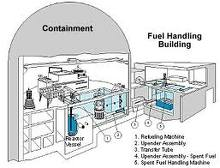 admin
admin
Reuters has reported that Pilgrim did automatically shutdown after a loss of offsite power last night. AP has reported that Pilgrim lost offsite power at 9:15 PM last night (as did several hundred thousands Massachusetts residents) due to the storm, and has been running cooling and safety systems with emergency back up generators since. AP has also reported that Seabrook, NH, "hometown" to a full-scale atomic reactor, was blanketed with 26 inches of snow. Despite the risk of power outages, NRC's Power Reactor Status Report showed that, as of yesterday (the most recent report available), all reactors in the Northeast were still operating at or near full power.
Even when reactors automatically shutdown, as happened last night at Pilgrim, their hot core still needs to be actively cooled for days, or a meltdown can occur. If primary offsite power is lost, but emergency diesel generators function as designed, cooling to the reactor core can be maintained. But, as revealed by U.S. Congressman Ed Markey (D-MA), there is a long history of diesels not working when called upon in the U.S.
On 3/11/11, when the 9.0 earthquake struck off the northeast coast of Japan, the three reactors operating at Fukushima Daiichi automatically shutdown. But the quake had also destroyed primary offsite power, leaving the emergency backup diesel generators as a last line of defense to cool the still-hot reactor cores. An hour later, the 45-foot tall tsunami also destroyed the diesel generators, plunging reactors there onto the inescapable path towards meltdown. (There is strong evidence that the quake alone, prior to the tsunami, had plunged Unit 1 into meltdown mode.)
Thus, shutting reactors down ahead of predicted natural disasters, such as this current blizzard or the recent Hurrican Sandy, would allow the core to cool, decreasing the risks of overheating and meltdown if offsite power is lost and emergency diesels don't work. However, the nuclear power industry and NRC rarely take such a basic safety precaution.
